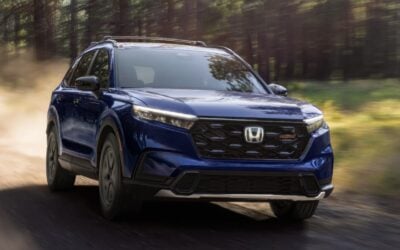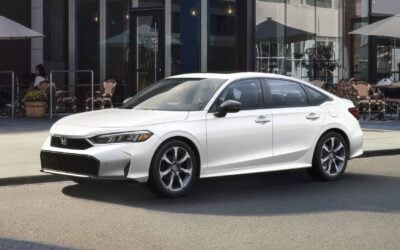It’s not your imagination — some automakers really are raising prices more than others. A new market analysis shows that while average new car prices are inching higher in 2025, the real story is more nuanced. While some automakers are piling on the incentives, others are moving in the opposite direction.
At first glance, car prices appear relatively stable. According to the latest data from Kelley Blue Book, the average transaction price for a new vehicle held steady at $48,799 in May. Compared to May 2024, that’s a 1.0% increase. Meanwhile, the average MSRP ticked up to $50,968, a 2.1% increase year over year.
But a closer look at individual automakers reveals some surprising trends. Here’s a look at which brands are raising prices the most, and which are doing the opposite.
Which Brands Are Raising Prices?

While prices rose across the board, five automakers posted the highest year-over-year increases in transaction prices. The numbers are eye-opening:
| Automaker | May 2025 | May 2024 | Price Increase |
| Volkswagen Group | $60,696 | $53,686 | 13.1% |
| Jaguar Land Rover | $107,766 | $98,036 | 9.9% |
| General Motors | $54,060 | $51,243 | 5.5% |
| Nissan-Mitsubishi Alliance | $36,576 | $34,691 | 5.4% |
| Mazda | $36,429 | $34,644 | 5.2% |
One important factor driving price inflation is the introduction of all-new, higher-priced models. Some automakers are leaning into premium segments, especially in electric vehicles. General Motors, for instance, has been ramping up production of high-dollar electric trucks in 2025, like the GMC Hummer EV and Silverado EV. These pricey additions skew the average transaction price upward, even if legacy model pricing remains more stable.
At the same time, incentive spending is being reined in. Volkswagen, Mazda, Land Rover, Volvo, and BMW all reduced incentive spending by more than 10% in May. Chrysler, Jeep, and Ram also offered fewer discounts.
On the other end of the market, Tesla, Toyota, and Nissan boosted incentive spending. Toyota increased incentives by over 20% month-over-month. Still, Toyota’s incentive spending remains modest at just 4.1% of the average transaction price. If you’re looking for a great deal, it might be worth an electric test drive. EV incentives average 14% of the average transaction price in 2025.
Where Prices Are Falling in 2025

While some automakers are raising prices, others are lowering them. The truth of the matter is, most of these falling prices are not due to lower MSRPs, but instead result from higher incentives.
Five automakers saw year-over-year price decreases in May 2025:
| Automaker | May 2025 | May 2024 | Price Decrease |
| Stellantis | $53,623 | $56,193 | – 4.6% |
| Tesla | $55,277 | $56,860 | – 2.8% |
| Ford Motor Company | $55,159 | $56,115 | – 1.9% |
| Hyundai Motor Group | $37,210 | $37,612 | – 1.1% |
| BMW | $70,255 | $70,811 | – 0.8% |
As you can see, car price trends are far from uniform in 2025. While some brands push further into premium territory, others are using huge incentives to stay competitive, or simply to finally move 2024s off the lot. Stellantis, in particular, has aggressively discounted models like the Jeep Grand Cherokee and Ram 1500 amid growing inventory. Nissan is doing much of the same.
Interestingly, Stellantis shares something in common with one of the automakers raising prices the most: Volkswagen. Despite taking opposite approaches to pricing, both of these global giants consistently appear on the list of slowest-selling vehicles each month. Here’s a look at the models struggling the most on dealer lots today:
| Make | Model | Market Day Supply | Total For Sale | Total Sold (45 days) | Average Selling Price |
|---|---|---|---|---|---|
| Ram | Ram 2500 | 392 | 8,133 | 934 | $69,711 |
| Audi | Q4 e-tron | 388 | 2,559 | 297 | $58,598 |
| Audi | A6 | 368 | 2,854 | 349 | $67,586 |
| Volkswagen | ID.4 | 262 | 4,621 | 795 | $43,845 |
| Jaguar | F-PACE | 243 | 2,943 | 544 | $71,349 |
| Land Rover | Range Rover Velar | 241 | 3,379 | 630 | $72,453 |
| Porsche | Taycan | 241 | 2,098 | 391 | $143,756 |
| Alfa Romeo | Stelvio | 218 | 875 | 181 | $55,472 |
| Audi | A8 | 217 | 546 | 113 | $96,267 |
| Land Rover | Discovery | 209 | 1,668 | 360 | $75,392 |
See the complete list: The Fastest and Slowest-Selling Cars Right Now
In short, these trends reflects a broader shift in strategy across the auto industry: sell fewer vehicles, but make more profit on each one. That’s exactly why automaker profits have soared in the post-pandemic era. For many OEMs, the 2020–2022 supply chain bottlenecks turned into a “when life gives you lemons, make lemonade” moment. Instead of chasing volume, automakers leaned into higher-margin models.
What Smart Buyers Can Do in Summer 2025
With prices continuing to climb for some brands and segments, buyers need to be more strategic than ever. Here’s how to navigate this market:
1. Shop the deals. Low APR financing and attractive lease offers are out there, but you have to know where to look.
➡️ Compare deals now
2. Stay flexible. Don’t fall in love with one specific make or model. Today’s “dream car” might cost you hundreds more each month compared to a more affordable alternative.
➡️ Find fair prices with CarEdge Pro
3. Look beyond the sticker price. Total cost of ownership matters more than ever. A car with great fuel economy, low depreciation, and strong reliability will save you thousands down the road.
➡️ Use CarEdge Research to find the best value… It’s FREE data!
4. Get expert help. Don’t go it alone. A CarEdge Concierge can help you compare options, negotiate on your behalf, and ultimately save big — all while reducing stress.
➡️ Learn how a personal Concierge can help you today.













0 Comments